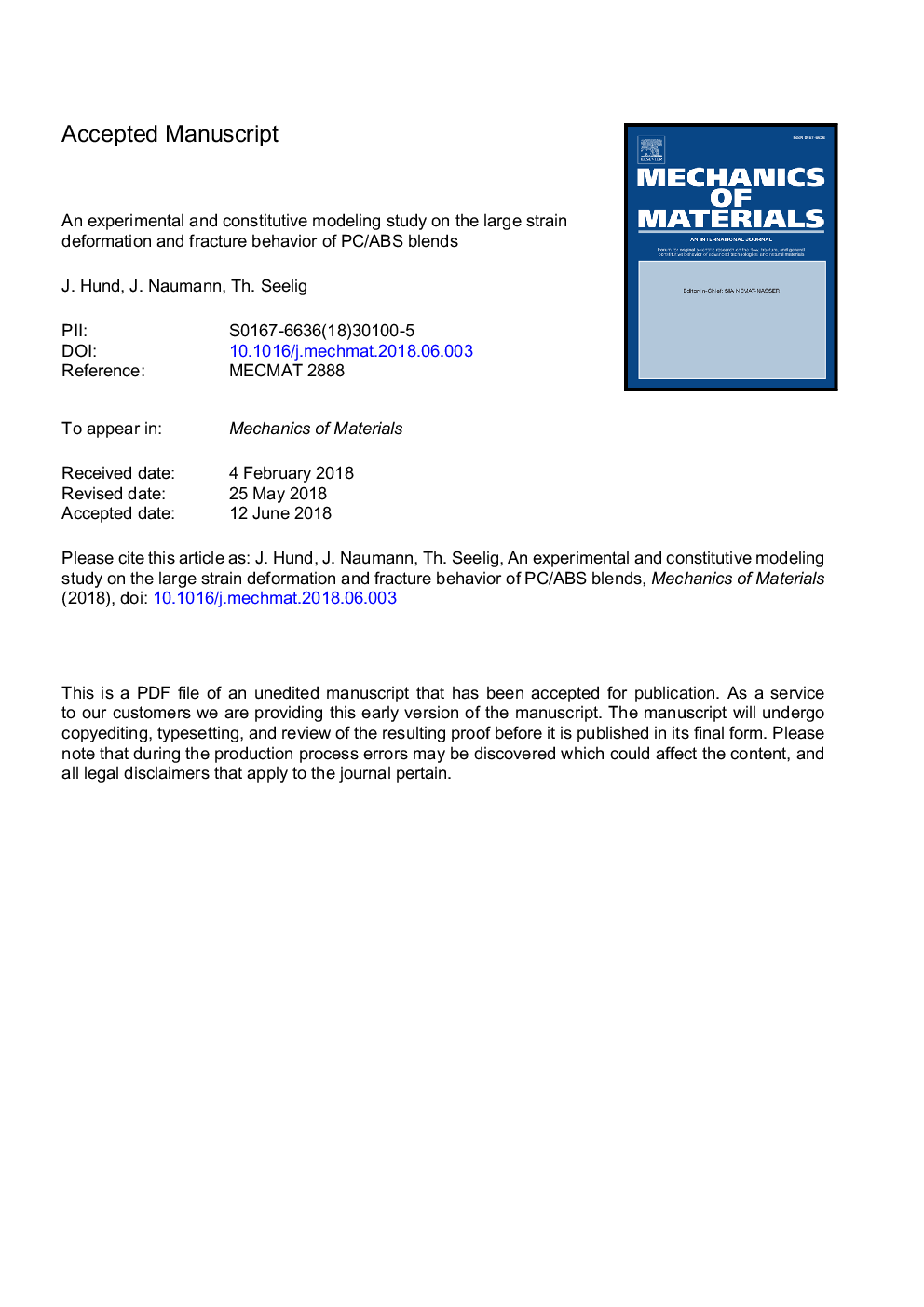| Article ID | Journal | Published Year | Pages | File Type |
|---|---|---|---|---|
| 7178491 | Mechanics of Materials | 2018 | 30 Pages |
Abstract
Two rubber-toughened thermoplastic polymer blends with different volume fractions of polycarbonate (PC) and acrylonitrile-butadiene-styrene (ABS) are analyzed experimentally as well as by constitutive models and finite element simulations with regard to their large strain deformation and fracture behavior. Special emphasis thereby is devoted to the overall plastically dilatant behavior of these materials which results from microscale damage mechanisms. Not considering the latter in detail, it is shown that several material models of different complexity may well capture the macroscopic true stress-strain response and the plastic dilatancy of PC/ABS blends under uniaxial loading. The suitability of these models to describe the behavior of the blends under more complex loading conditions, however, turns out to be ambivalent and depends on the material composition, i.e. the PC vs. ABS content. This issue is analyzed by means of finite element simulations of fracture tests where numerical predictions in terms of the overall force-displacement response and the local evolution of the crack-tip plastic zone are compared with experimental findings.
Related Topics
Physical Sciences and Engineering
Engineering
Mechanical Engineering
Authors
J. Hund, J. Naumann, Th. Seelig,
